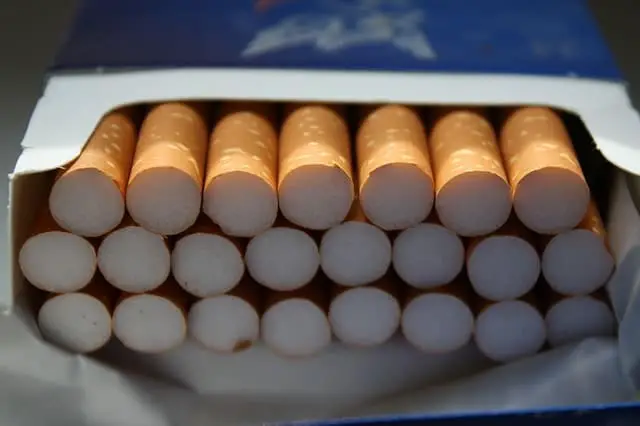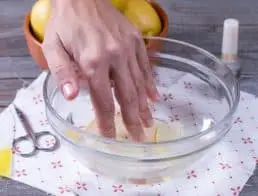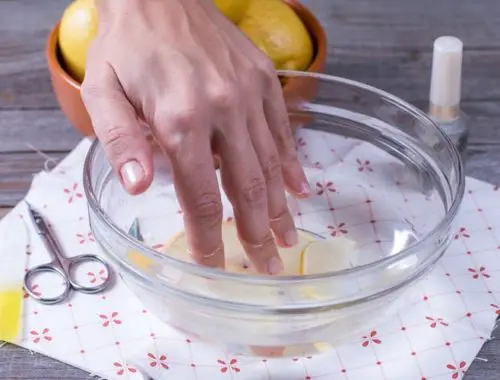It can be very difficult to stop a bad habit, as the behavior becomes such an automatic response that you aren’t even aware you’re doing it sometimes. Add pleasure into the mix – such as drugs and alcohol or eating – and it’s even harder to break a bad habit. If there’s a negative behavior in your life you’d like to change, these 9 helpful steps can help you start.
Step 1: Identify the Problem Behavior

The first step in stopping a bad habit is to know exactly what the behavior is that you want to change. Admitting and acknowledging that there is something you want to change is important so that you can eventually figure out how to stop the habit.
Helpful Tip: Get a notebook to track your progess and write down what it is you’d like to change, and how you’d like to behave instead. Having a visual cue of your goal can be helpful in making it a reality, as can writing it down.
Step 2: Identify Your Triggers
Once you know what bad habit you want to stop, you’ll need to identify your triggers. That is, what people, events, or items cause you to engage in the bad habit. For example, opening the fridge door might cause you to want to crack a beer, or being at a party with a large group of friends might push you to light up a cigarette. Since these sorts of behaviors are so automatic, it can help to interrupt your body’s autopilot from kicking in.
Helpful Tip: If you’re having difficulty identifying your triggers – especially emotional ones – try to work backwards from the behavior. If you find yourself biting your nails, stop and tune in to what it is you’re feeling in that particular moment.
Step 3: Remove Your Triggers
If at all possible, remove as many triggers from your life as you can. This might mean throwing out all the junk food in your cupboards, going to a different spot for your break, or even putting a bitter-tasting polish on your fingernails. Once your vice is no longer easy to access, the temptation becomes harder to give in to, allowing you time and space to be aware of the behavior and ultimately change it.
Helpful Tip: If you can’t remove your triggers from the home, have a friend or family member place them somewhere you can’t easily access.
Step 4: Plan Some Distractions
The next step in stopping a bad habit is to plan some distractions for yourself in case you feel triggered. You could try playing some music you enjoy, drinking a glass of water, going for a walk, or taking 10 slow, deep breaths. These types of distractions can interrupt your cravings long enough that the feeling should pass.
Helpful Tip: Visualize in your mind a triggering scenario, and how you might handle it. You can also roleplay with a friend. This way, you’ve worked out your plan in advance and can feel confident putting it into action should a situation pop up.
Step 5: Change Your Patterns
If you want to change your habits, it’s not just about removing something – you need to add a positive behavior in its place. If you stick to the same patterns in your life, it’s going to be very difficult for you to change. For example: if you want fit exercise into your day, consider working out first thing in the morning or going for a walk on your lunch break. If you want to stop staring at a screen in the evening, join a bookclub or start a daily meditation practice.
Helpful Tip: Invest in a habit-tracking journal to create new, positive habits in place of the old.
Step 6: Use Prompts for Positive Change
In order to help new, positive habits to stick, it can be helpful to have prompts that trigger the healthier behavior. For example, laying out your workout clothes the night before, or having a bottle of water on your bedside table can help you commit to a fitness or hydration goal.
Step 7: Reach Out for Support

This step is very important for helping to create long-lasting change. Having a buddy or two who knows your goals and helps you stick to them can be the difference between stopping a bad habit for good or reverting back to your old ways.
Helpful Tip: You can find support through friends, family, groups, or professionals. If you find yourself feeling triggered, reach out to them for support and motivation.
Step 8: Reward Yourself
Finally, as your bad habit slowly becomes nothing more than a distant memory, reward yourself for all your hard work. It can be incredibly motivating to have small and large rewards built into your habit-changing plan. You could take the money you might have spent on your bad habit and use it to enjoy a day at the spa, or, you could plan a special activity for making it a certain length of time without engaging in your bad habit.
Helpful Tip: Give yourself a reward that ties into your new, healthy habits, like a running backpack that will motivate you to keep up with your daily jogging routine or a comfy meditation cushion that will get you excited for your daily meditation session.
Step 9: Seek Professional Help
If you find that it’s just too difficult to break that bad habit yourself, seek out the assistance of a professional who can help you stop the behavior. This might be a doctor or therapist, or some other behavior specialist.
Some habits can be especially difficult to break, so it’s OK if it takes several attempts to finally kick it to the curb. Do your best to just take one day at a time and implement whatever changes you can in order to live your best life. Celebrate your success along the way and you’ll soon realize you’ve created new, healthier habits.








